12
Jan
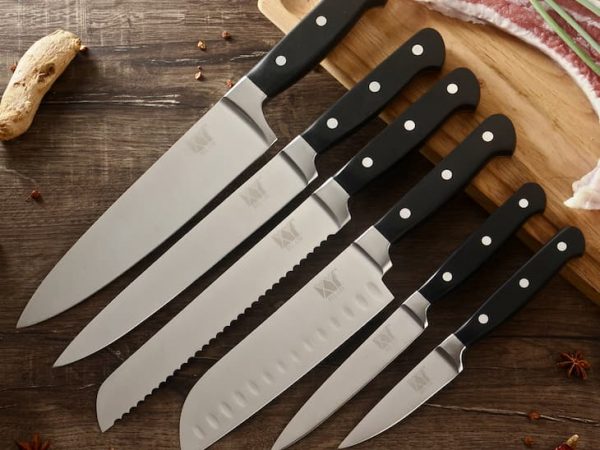
We all know that using fresh, organic produce is key for cooking delicious healthy meals. But what else is necessary for preparing good food? Some would say culinary skills, but for me, having a kitchen stocked with the proper tools is the first step to a great meal. Investing in the right kitchen tools will make cooking much more enjoyable. After all, you need to get some cooking essentials for your kitchen so that you can improve your culinary skills. Here are the must-have kitchen tools that will take your cooking experience to the next level.
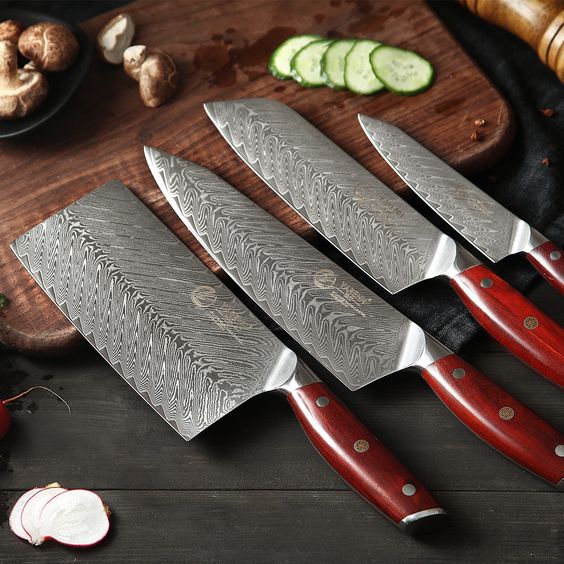
Without the right cooking knife, food prep can be a misery. To be able to properly prep food in the kitchen, I would recommend you to get 3 main kitchen knives: a chef’s knife, a paring knife and a serrated knife. Although there are plenty of other specialty knives, these three are essential.
A chef’s knife can be used for most kitchen tasks, such as cutting fruits and vegetables, meat and fish. It’s one of the most useful and versatile cooking tools you can get. The design of the blade, the sharp fine tip and the deep, stable heel make this knife true to its function.
When shopping for a cooking knife, I recommend you choose one made from high-carbon stainless steel. While other materials are also used to make quality chef’s knives, most manufacturers prefer high-carbon stainless steel due to the good edge retention, toughness and ease of maintenance it offers. Plus, stainless steel doesn’t rust and is generally a bit less fragile against hard materials.
A paring knife is great for cutting smaller items or making more precision cuts. You’ll need this knife for the small fruit, vegetable and meat prep that isn’t comfortable to cut with the chef’s knife, like trimming brussel sprouts and strawberries, halving mushrooms or preparing artichokes. Even though paring knives are small and meant for delicate work, you’ll still need to invest in a good one!
A serrated knife is the third must-have knife in your kitchen. You’ll need it to prepare odd-ball fruits and vegetables that have tough or waxy skins with soft interiors, like tomatoes, eggplants and slicing the binds of pineapples, melons and hard winter squash. The serrated knife is also perfect for slicing cleanly through all types of bread and cakes without smashing them.
For tips on how to improve knife skills cooking, check this basic knife skills guide.
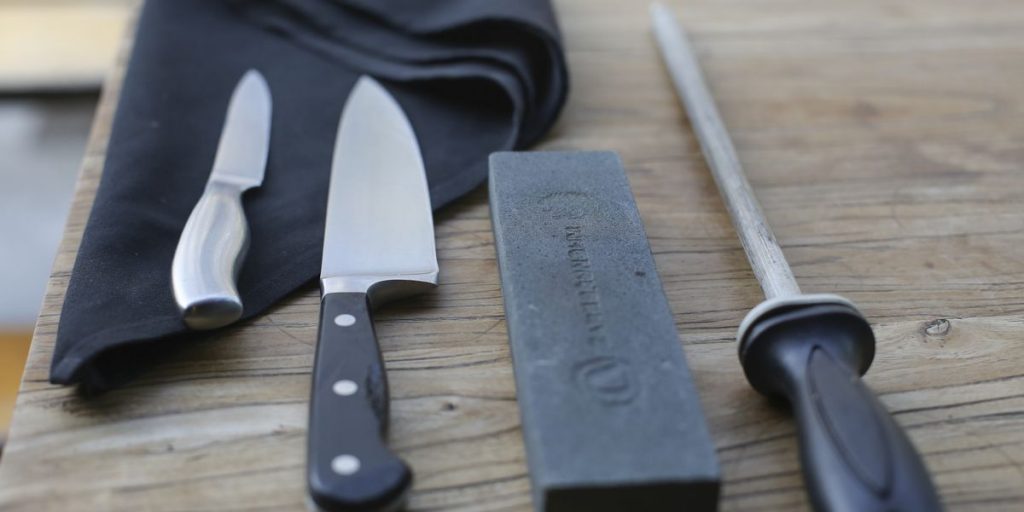
Keeping your knives sharp is one of the best ways to increase their longevity. As for how much sharpening your knives will require will depend on your use frequency and menu. I suggest you sharpen your knives when they get dull. Experienced chefs often use a sharpening stone to get their knives sharp, but you can perfectly use a chantry knife sharpener, which is easier for beginners and get the job done well.
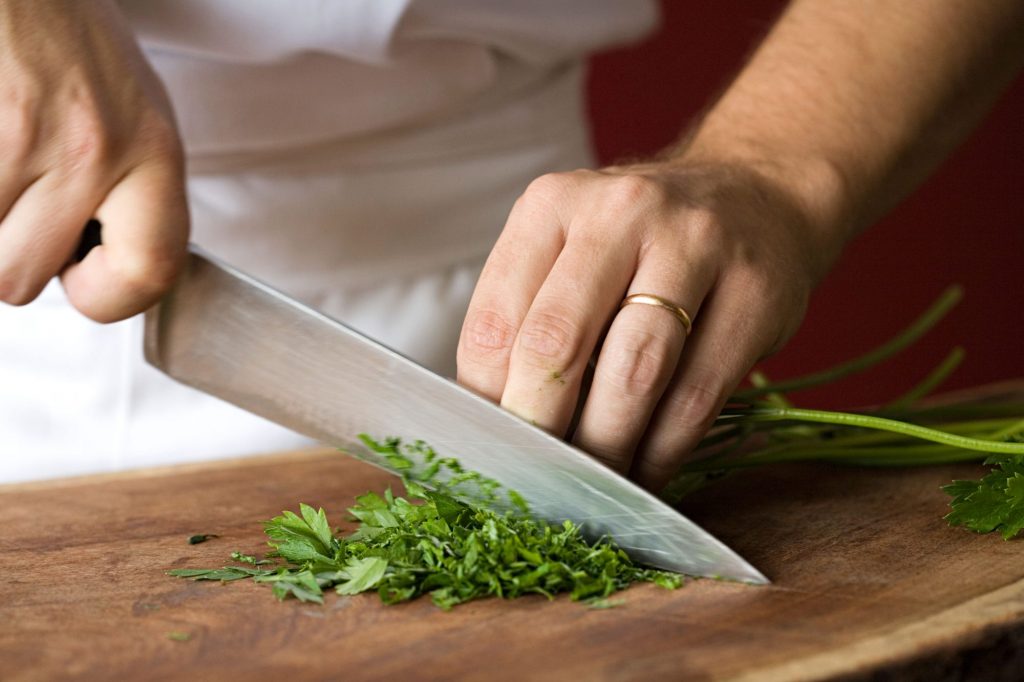
Glass or stone cutting boards can be very pretty, but plastic or wood cutting boards are your best bet. Marble boards look great setting on kitchen counters, but they are more for show off. They are going to dull your knives, so you shouldn’t use them for chopping. The main thing to keep in mind when choosing a cutting board is a material that is hard enough so that you don’t wear it out and get grooves in it all the time. Grooves can lead to a buildup of bacteria, the reason why you should consider replacing your cutting board every couple of years.
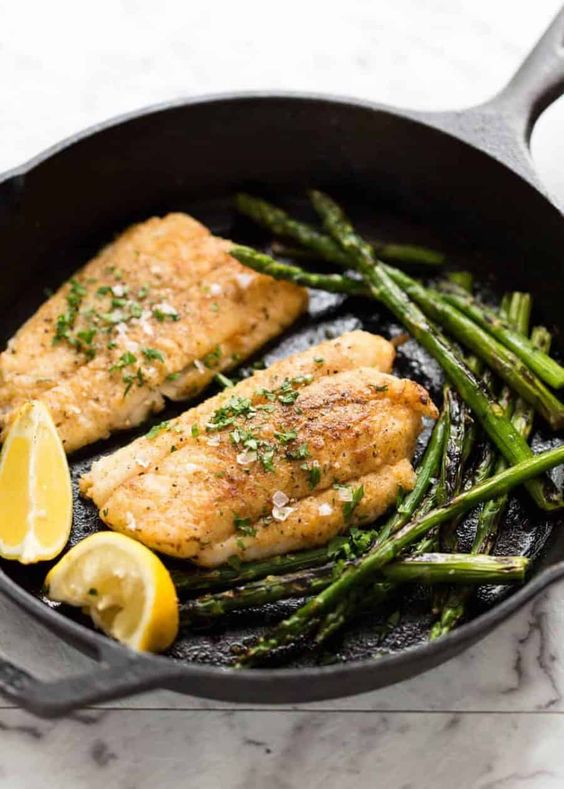
A frying pan is one of the most versatile pans that you can have in your kitchen. From frying an egg to whipping up an easy and quicky stir fry meal, frying pans can be used for cooking a variety of delicious meals.
Frying pans are lightweight, which means they are great for stirring and flipping the flood that you’re cooking. They also hold heat longer than other pans, so they can quickly and evenly cook foods. But with the bunch of different types of frying pans out there, how do you know which one to choose? Well, the type of cooking you’ll be using the pan for is an important consideration when selecting a frying pan.
Cast iron, carbon steel and stainless steel are the best options to consider. Truth be told, cast iron frying pans are my favourite option. They can be used to sear, sauté, braise, fry and even bake food. Cast iron conducts the heat really well, making it great for cooking a steak or getting a nice kind of sear on a chicken breast or something similar. When it comes to caramelizing the surface of something, which can really add flavour to a piece of red meat, for example, a cast iron is the best pan to get the job done.
A stainless steel pan is another versatile option that can be used for a variety of tasks such as frying and sautéing. Because stir fry required high heat, a carbon steel frying pan is also a great choice. However, if you only need a pan for frying eggs or preparing delicate fish or pancakes, a nonstick frying pan may be fine. Some people would rather use a stainless steel pan because it doesn’t have a chemical coating. Stainless steel is typically considered non-reactive.